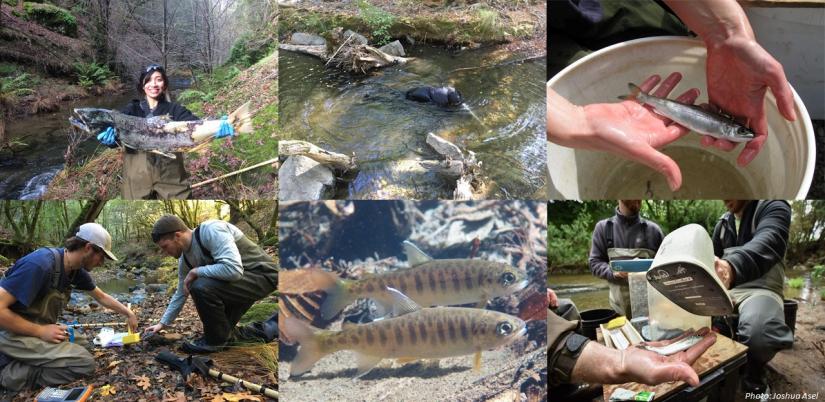Breadcrumb
- Russian River Salmon and Steelhead Monitoring Program
- Fish Monitoring
Fish Monitoring

Adults
The number of returning adults is an important metric in salmon recovery, as these fish are the basis of future wild coho populations. NOAA Fisheries has established a recovery target of 10,100 adult coho salmon returning each winter to the Russian River basin. Passive tracking methods to estimate basinwide returns of Conservation Hatchery coho salmon. Seasonal spawner surveys are also conducted by Sonoma Water to document adult salmon and steelhead returning to spawn in many Russian River tributaries.
Young-of-year
Summer snorkel surveys are used to document the presence and spatial distribution of juvenile salmonids in lower Russian River streams, and to determine relative abundance by counting the number of wild coho salmon and steelhead young-of-year (yoy) observed.
Smolt Monitoring
Traps are operated on Willow, Dutch Bill, Green Valley, Mark West and Mill creeks s each spring to monitor coho smolts (one-year old fish) as they make their way downstream to the ocean. Data are used to ascertain migratory patterns in relation to environmental conditions, and to quantify smolt abundance, overwinter survival and growth.
PIT-tag Technology
Tiny devices called Passive Integrated Transponder (PIT) tags are used to identify and track individual salmon and steelhead from their release as juveniles, or capture and tagging as wild fish, to their return as adults. Channel-spanning antenna arrays placed in critical salmon streams record information on individual fish 24/7, as they pass over these receivers at all life stages.